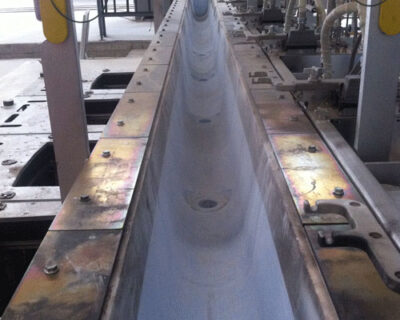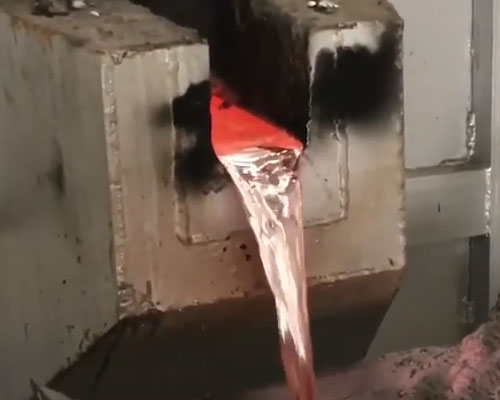An aluminum casting trough is a tool for conveying liquid aluminum. The molten aluminum is transported from the mouth of the holding furnace to the casting platform. In order to prevent the molten aluminum from falling too much, the conveying distance of the launder is generally not less than 10m, and the upper part of the heat preservation launder is covered with refractory material, and the temperature is lower than 1℃, reduce the open washing tank by 1~3℃ per meter.
Structure of Aluminum Casting Trough
The cross-section of the aluminum casting trough is U-shaped or rectangular, the outer shell is made of 8-10mm steel plate, and is welded with anchor nails to fix the refractory material, and the interior is knotted with high-aluminum refractory material.
The cross-sectional area of molten aluminum depends on the capacity of the melting furnace.
The thickness of the refractory material is 30-50mm, and it is also made of sintered U-shaped refractory bricks. In order to facilitate the movement, the length of the runner is generally not more than 2.0m/branch.
U-shaped flanges with holes are installed at both ends to facilitate the interconnection of multiple runners.
When connecting, tighten the gasket hard aluminum silicate plate with bolts.
Before using the assembly line trough, it needs to be painted and baked to remove moisture, and the baking temperature should not be lower than 150°C. After use, clean the aluminum slag and debris in the storage tank.

Aluminum Casting Trough and Launder Use
1. Connect the steel plate and the bracket together to form the shell of the runner.
2. The inner lining is formed by connecting the heat-insulating cotton board and the diversion trough made of shaped heat-insulating material.
3. A deaerator and a filter are connected in the middle.
The trough and launder system is completely fireproof and has been pre-installed mechanically and electrically at the time of delivery. According to the layout design, the flow cell units of each preform are sealed and bolted together. Then fill a small amount of refractory material at the joint to optimize the thermal insulation effect without the risk of leakage.

